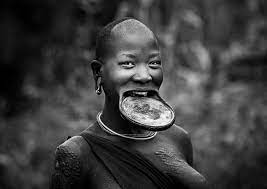The chilling tale of mingi, a traditional belief among the South Omotic-speaking Karo and Hamar peoples of southern Ethiopia, has long been shrouded in darkness. This haunting superstition entails branding children with perceived or real physical abnormalities as ritually impure. They are also considered to cast an evil shadow upon their communities, leading to the grim practice of disposing of mingi infants without a proper burial.
But why are these innocent lives condemned? Reasons for being declared impure range from the circumstances of birth, such as being born out of wedlock or as a twin, to specific physical characteristics like the eruption of upper teeth before lower teeth or the chipping of a tooth in childhood. Tragically, mingi children are subjected to various gruesome fates, including having their mouths filled with sand, strangulation by rope, drowning in rivers, or abandonment in the unforgiving forest.
This dark practice is deeply ingrained in the Karo culture and has spanned generations, resulting in the estimated loss of over 5000 innocent newborns. Some have speculated that it may have originated as a means of eliminating those deemed likely to become burdens or unable to contribute to the perpetuation of their people.
In 2008, a glimmer of hope emerged when Karo tribesman Lale Labuko began rescuing children condemned as "mingi." His journey is documented in the award-winning 2011 film 'Drawn From Water.' Collaborating with California filmmaker and photographer John Rowe, Labuko established the Omo Child Organization. So far, they have successfully rescued 37 children aged 1-11.
Lale Labuko
The turning point arrived in 2012 when the practice was officially banned within the Karo tribe, largely thanks to the unwavering efforts of Lale Labuko and Omo Child. However, the chilling truth lingers: mingi may still be secretly practiced in other Omotic communities.
This heart-wrenching tale is a reminder of the enduring power of individuals like Lale Labuko and organizations like Omo Child. Their determination and compassion have brought hope and light to those once condemned by the shadows of mingi.

.jpg)
Comments
Post a Comment